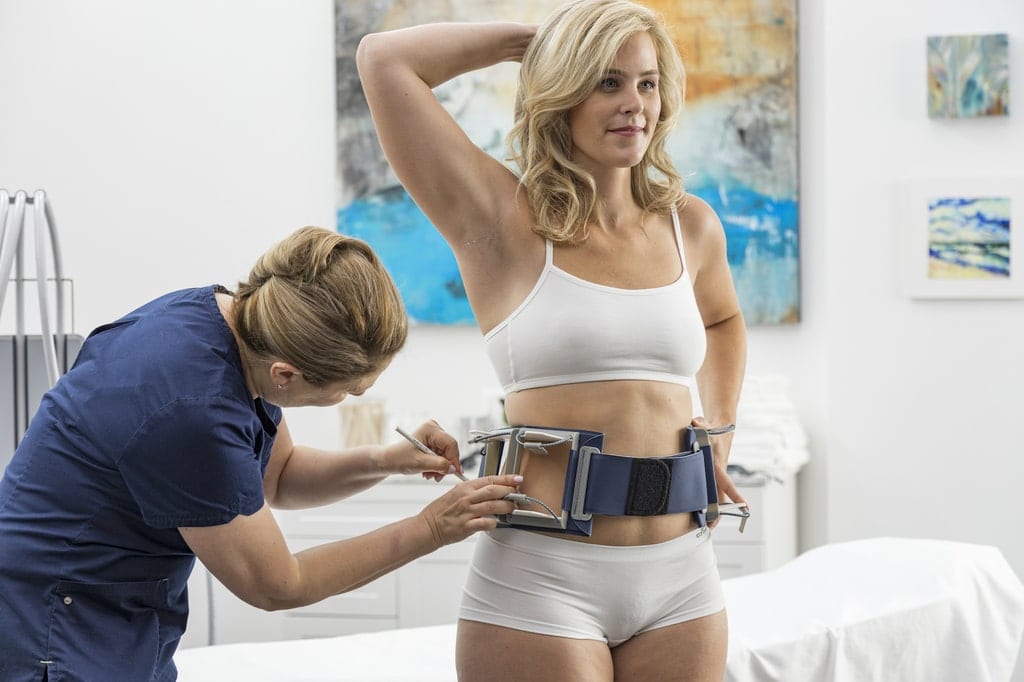Skin is our largest and most visible organ. Therefore, your skin complexion is the first noticeable thing. Skin complexion mainly depends on melanin, the skin pigment. Melanin is produced by melanocyte cells to protect the skin from damaging effects of ultraviolet (UV) rays. Excess of sun exposure negatively affects the skin complexion and health because UV radiation causes oxidative stress in the skin cells. From an aesthetic perspective, oxidative stress is responsible for fine lines and wrinkles, dull skin, skin laxity, and undesired pigmentation. Furthermore, accumulated sun damage (photodamage) can harm your health. It can cause pre-cancerous lesions and the most deadly skin disease, Melanoma
How Does the Skin Develop Pigment?
In fact, sunlight stimulates melanin production. More than half of the sun energy is presented by infrared radiation. Infrared radiation penetrates the skin deeper than UV-B and UV-A rays and generates reactive oxygen in the dermal layer, a type of unstable molecule that contains oxygen. Reactive oxygen easily reacts with other molecules in a cell. National Cancer Institute reports that a build up of free radicals or reactive oxygen species in cells may cause damage to lipids, DNA, RNA, and proteins, and may cause cell death. Reactive oxygen stimulates melanin production by the melanocytes through a series of chemical reactions. Then, the melanosomes, containing melanin, migrate to the top skin layer, the epidermis, and pass melanin to keratinocytes. When keratinocytes acquire the melanin, the changes become visible on the skin in a form of pigmentation. It is important to remember that the photodamage occurs much earlier than the skin pigmentation.
How Does Photodamage Affect the Skin ?
Often, persistent exposure to the sunlight leads to the over production of melanin by some melanocytes. As a result, individuals develop a localized pigmentation in a form of “age spots” or “brown spots”. These spots make the skin looking aged. In addition to undesired pigmentation, photodamage leads to the collapse of fibroblasts and reduction of collagen and elastin production (solar elastosis). These dermal structural changes make the skin surface irregular and the light reflection uneven. Therefore, the skin develops a dull, sallow complexion. see infographics to learn more
How to Treat Photodamage?
The first rule of thumb is prevention. Unfortunately, it is hard to completely prevent photodamage. Reducing exposure to the sun, avoiding all forms of tanning, and applying sunscreens can minimize the effects of this environmental insult. The benefits of sunscreens include decreasing the risk of sunburns caused by UV-B as well as accumulation of photodamage. Suncreens, however, fall short in protecting the skin from UV-A and infrared radiation. When photodamage is visually observed, it is time to take it seriously because it means that molecular and genetic changes took place. The severity of photodamage determines treatment options. Individuals with early signs of photodamage are usually treated with retinoids or retinols, vitamin C, and alpha hydroxyl acids. Moderate and severe forms of photodamage require the use of photofacial treatments, which are often referred as photorejuvenation. There is a wide range of different photofacial non-surgical treatments; they include laser therapies (LT) and intense pulsed light (IPL).
Skin is our largest and most visible organ. Therefore, your skin complexion is the first noticeable thing. Skin complexion mainly depends on melanin, the skin pigment. Melanin is produced by melanocyte cells to protect the skin from damaging effects of ultraviolet (UV) rays. Excess of sun exposure negatively affects the skin complexion and health because UV radiation causes oxidative stress in the skin cells. From an aesthetic perspective, oxidative stress is responsible for fine lines and wrinkles, dull skin, skin laxity, and undesired pigmentation. Furthermore, accumulated sun damage (photodamage) can harm your health. It can cause pre-cancerous lesions and the most deadly skin disease, Melanoma
How Does the Skin Develop Pigment?
In fact, sunlight stimulates melanin production. More than half of the sun energy is presented by infrared radiation. Infrared radiation penetrates the skin deeper than UV-B and UV-A rays and generates reactive oxygen in the dermal layer, a type of unstable molecule that contains oxygen. Reactive oxygen easily reacts with other molecules in a cell. National Cancer Institute reports that a build up of free radicals or reactive oxygen species in cells may cause damage to lipids, DNA, RNA, and proteins, and may cause cell death. Reactive oxygen stimulates melanin production by the melanocytes through a series of chemical reactions. Then, the melanosomes, containing melanin, migrate to the top skin layer, the epidermis, and pass melanin to keratinocytes. When keratinocytes acquire the melanin, the changes become visible on the skin in a form of pigmentation. It is important to remember that the photodamage occurs much earlier than the skin pigmentation.
How Does Photodamage Affect the Skin ?
Often, persistent exposure to the sunlight leads to the over production of melanin by some melanocytes. As a result, individuals develop a localized pigmentation in a form of “age spots” or “brown spots”. These spots make the skin looking aged. In addition to undesired pigmentation, photodamage leads to the collapse of fibroblasts and reduction of collagen and elastin production (solar elastosis). These dermal structural changes make the skin surface irregular and the light reflection uneven. Therefore, the skin develops a dull, sallow complexion.
How to Treat Photodamage?
The first rule of thumb is prevention. Unfortunately, it is hard to completely prevent photodamage. Reducing exposure to the sun, avoiding all forms of tanning, and applying sunscreens can minimize the effects of this environmental insult. The benefits of sunscreens include decreasing the risk of sunburns caused by UV-B as well as accumulation of photodamage. Suncreens, however, fall short in protecting the skin from UV-A and infrared radiation. When photodamage is visually observed, it is time to take it seriously because it means that molecular and genetic changes took place. The severity of photodamage determines treatment options. Individuals with early signs of photodamage are usually treated with retinoids or retinols, vitamin C, and alpha hydroxyl acids. Moderate and severe forms of photodamage require the use of photofacial treatments, which are often referred as photorejuvenation. There is a wide range of different photofacial non-surgical treatments; they include laser therapies (LT) and intense pulsed light (IPL).









